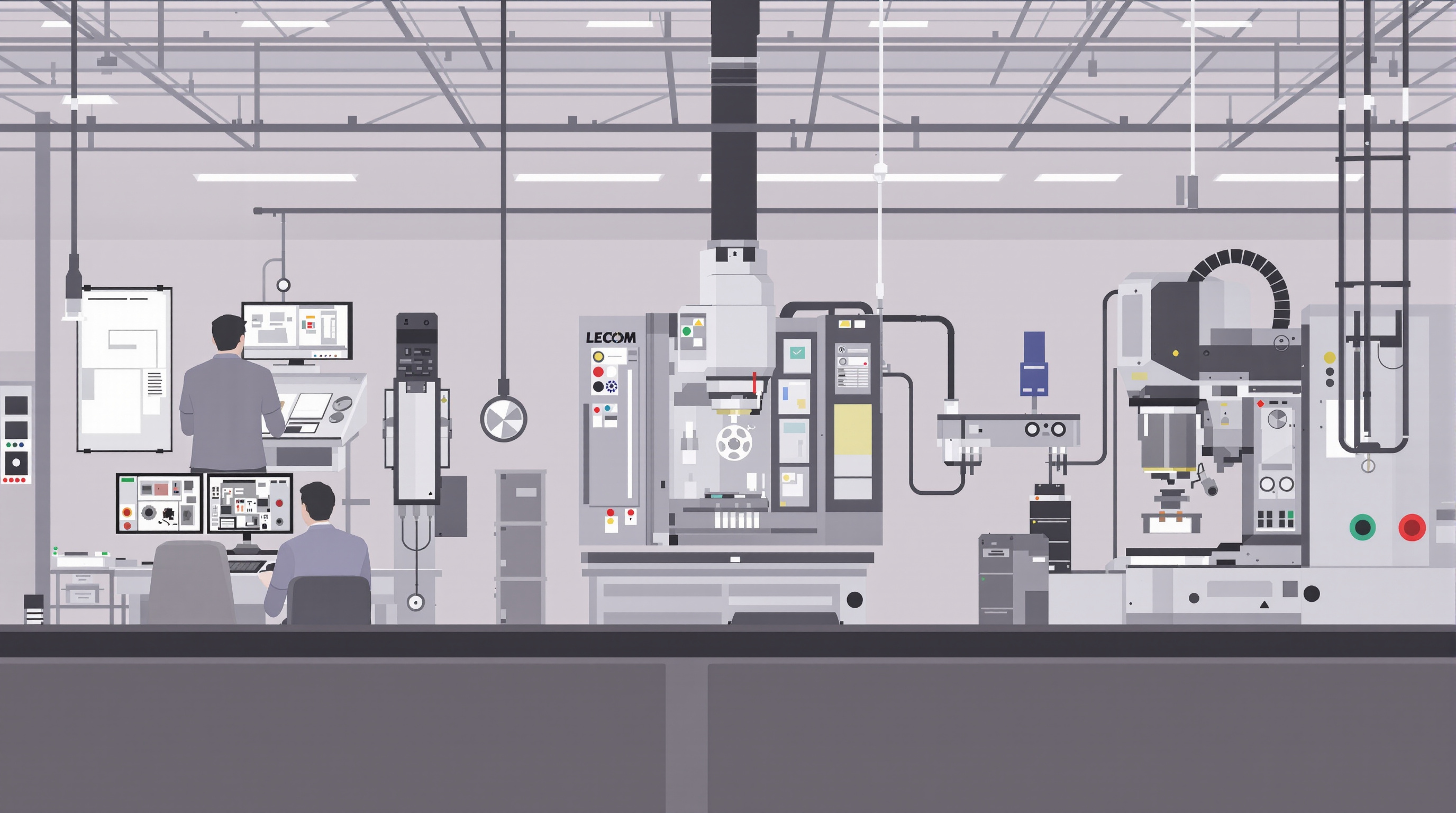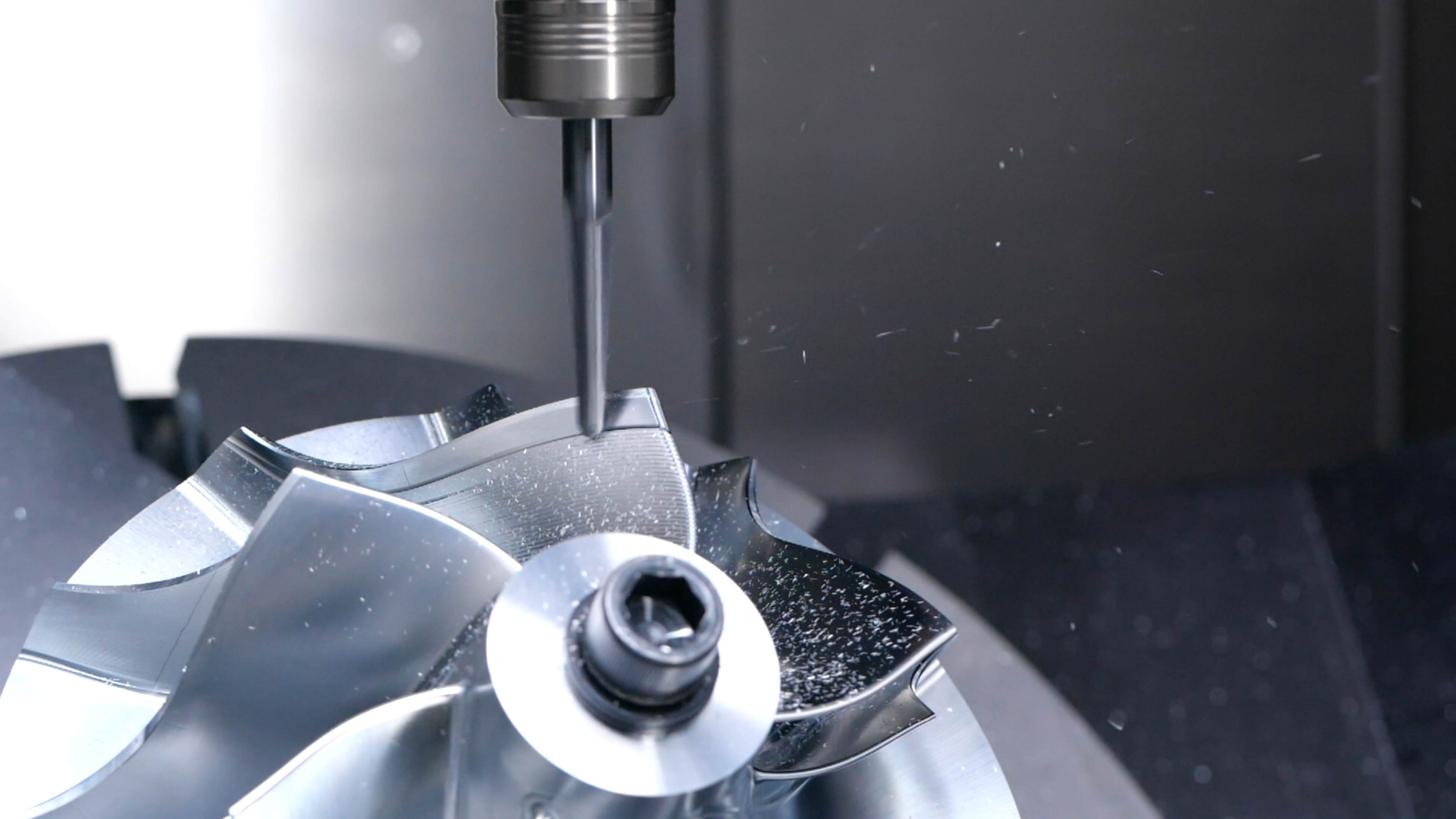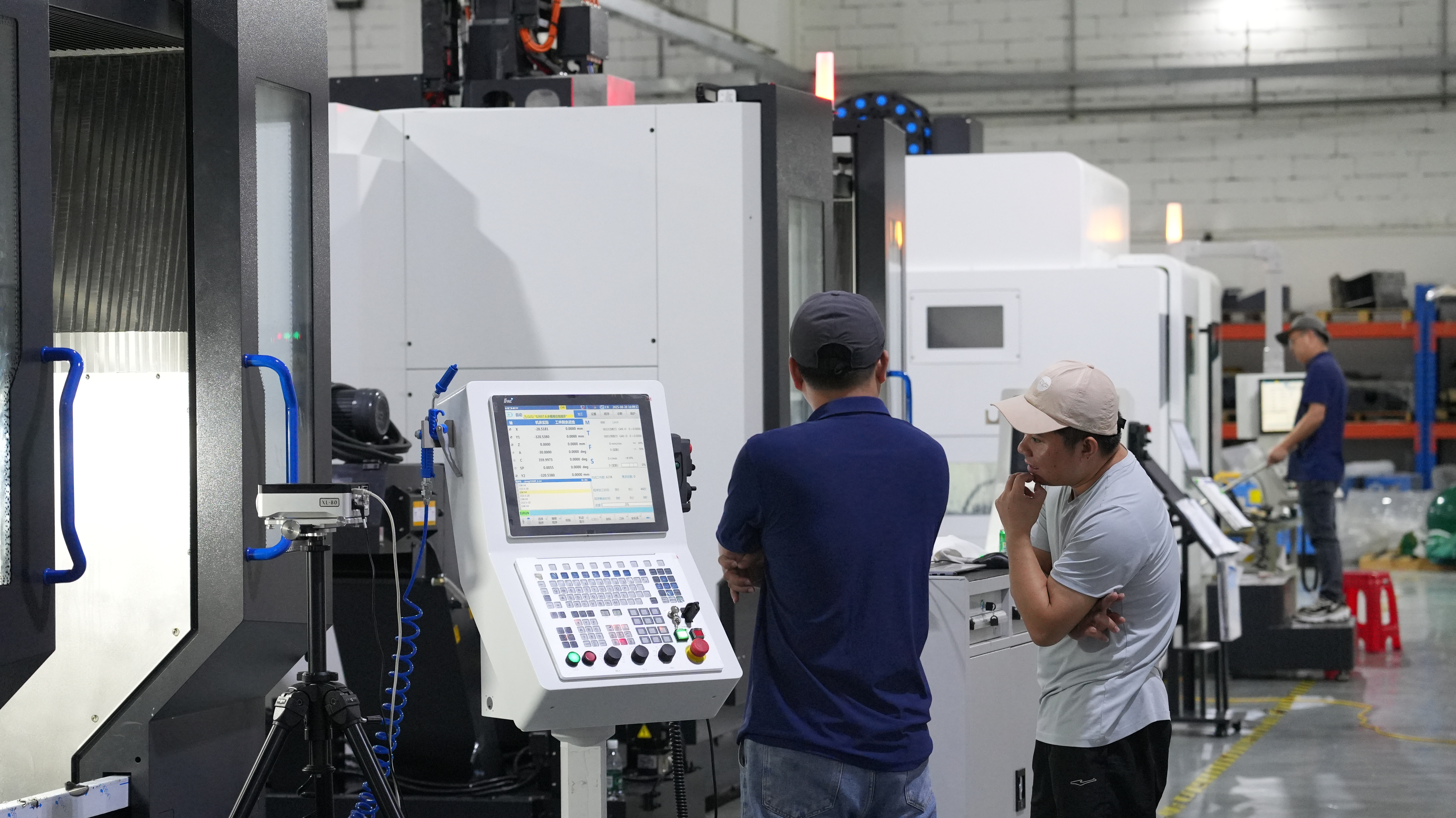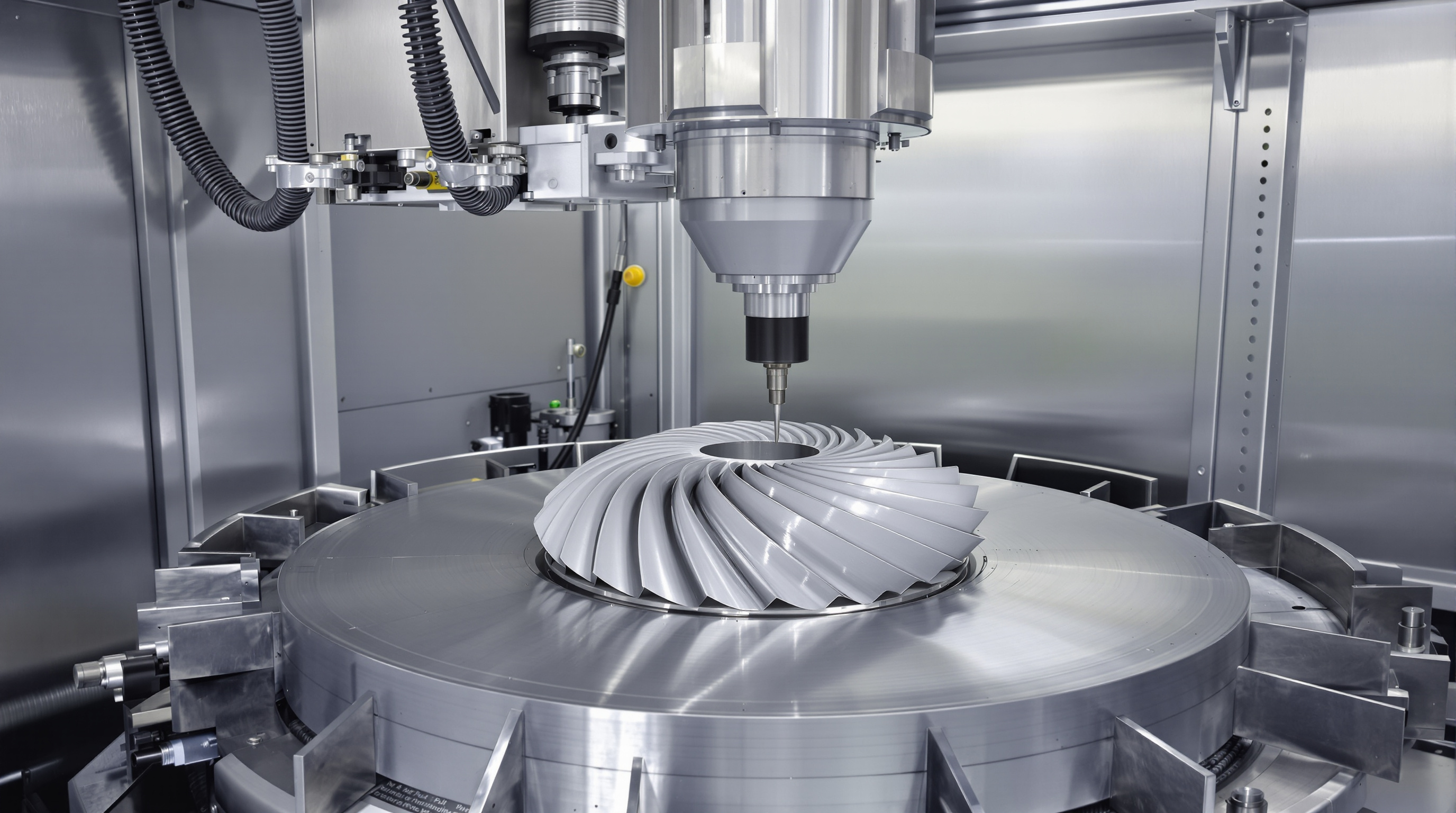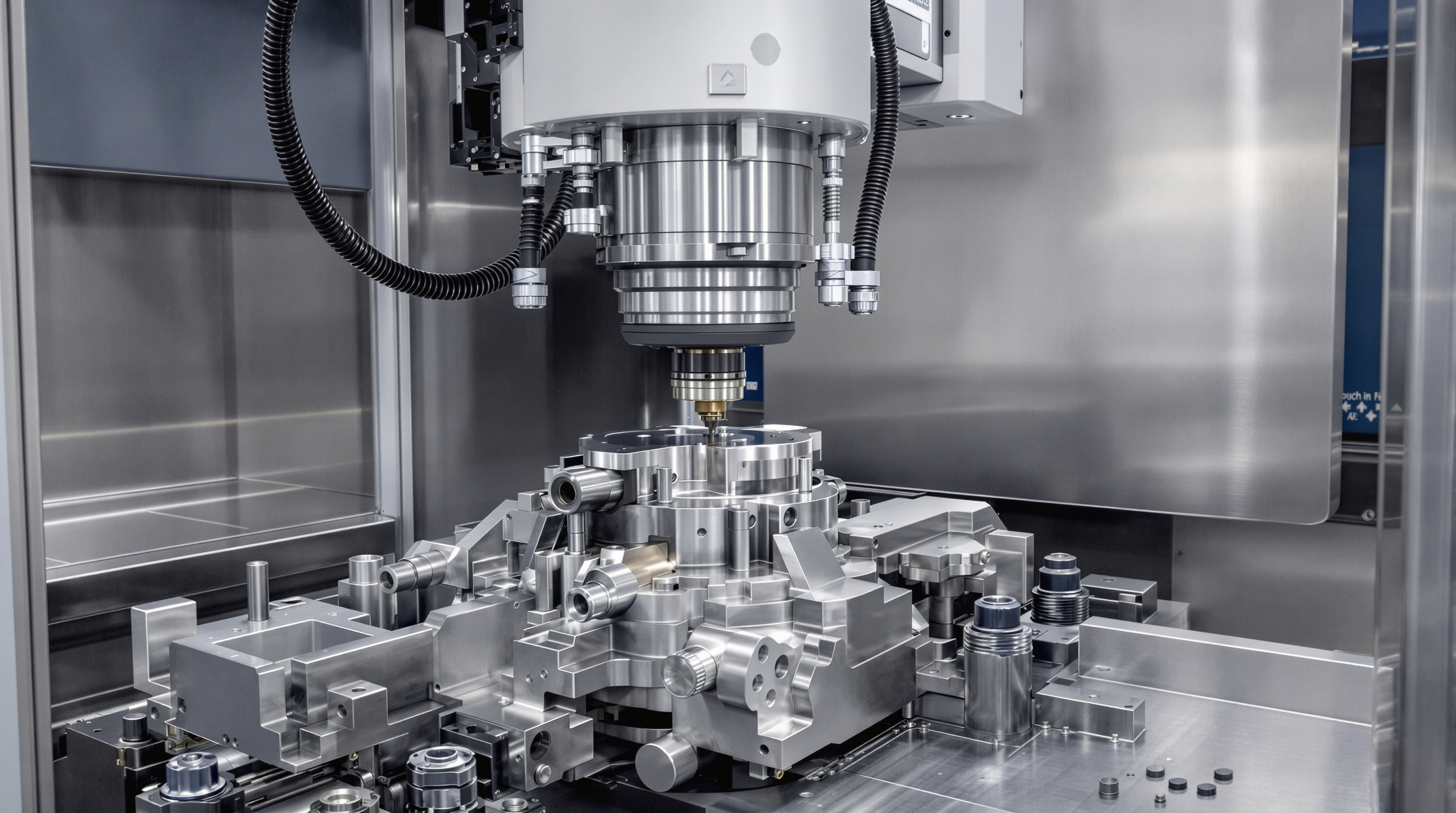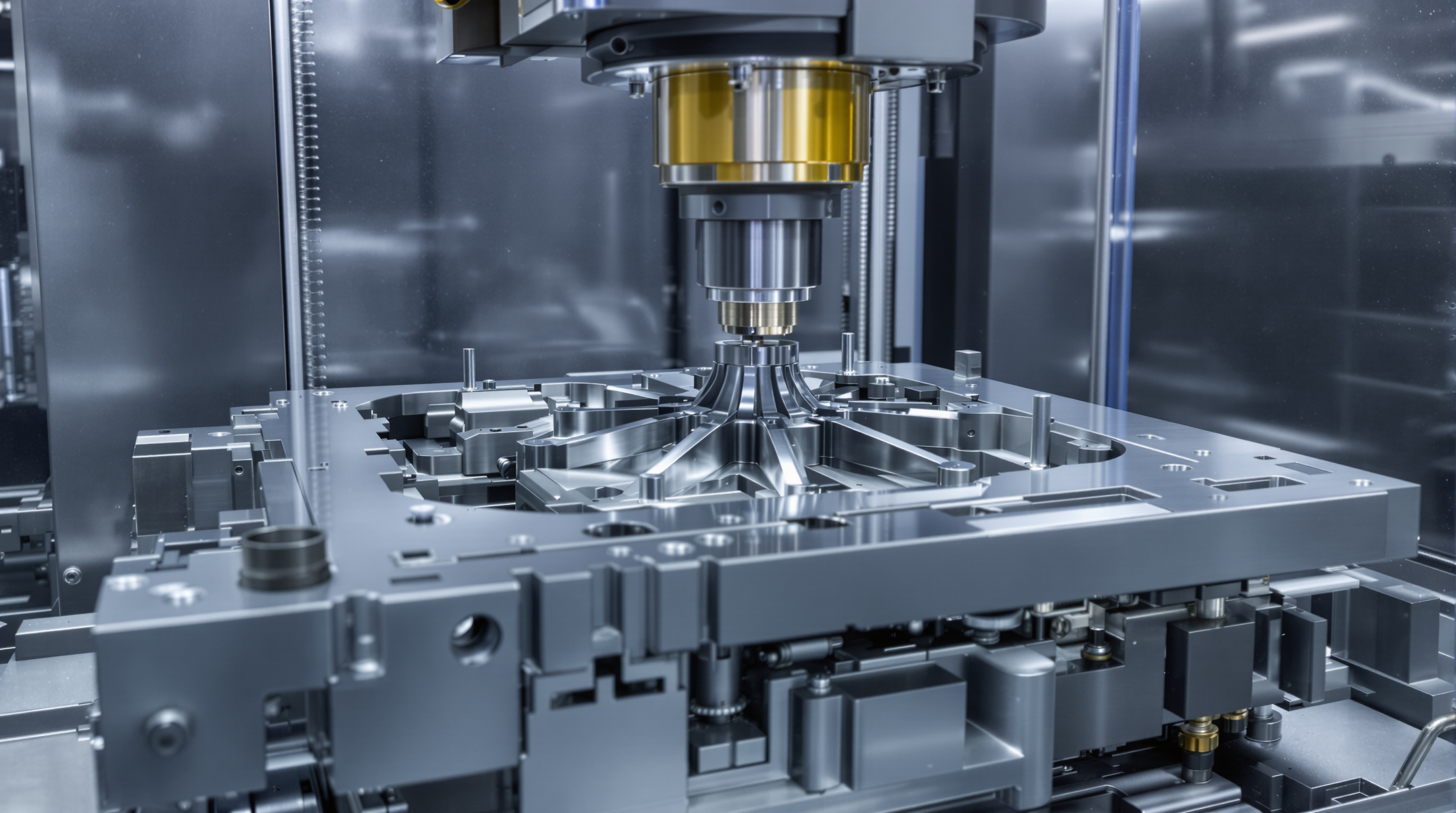The Evolution and Advancement of 5 Axis CNC Machine Technology
From 3-axis to 5-axis CNC machining: A technological leap
Moving from standard 3-axis to advanced 5-axis CNC machining represents a major leap forward in manufacturing capabilities. These systems add two extra rotational axes, usually labeled A and B, which cuts down on setup work by around three quarters when compared to older 3-axis machines. This means manufacturers can machine intricate parts such as airplane turbine blades or surgical implants in just one operation rather than multiple steps. Recent research published last year showed these machines cut production times roughly in half and achieve tolerances within about plus or minus 0.005 millimeters. Since workers don't need to keep adjusting positions manually anymore, there's far less room for mistakes, making it much easier to scale up automated production processes across factories.
Key advancements in multi-axis machining precision and speed
The latest generation of 5 axis CNC machines delivers amazing levels of accuracy thanks to their linear motor drives and feedback systems that work down to the nanometer level. These improvements cut down on machining time by roughly 30 to 40 percent when compared with machines from just a few years ago. What makes these machines really stand out is how they handle toolpaths. The advanced algorithms constantly adjust cutting angles as the machine works, which cuts tool deflection by around two thirds even when running at those incredibly high spindle speeds over 30 thousand RPM. According to industry reports coming out in 2024, we're seeing these machines take over most of the market now. About eight out of ten parts in the aerospace sector are made using this technology, and nearly seven in ten high end car prototypes rely on it too. Surface finishes are getting better all the time, with many manufacturers hitting that sub 0.4 micrometer Ra standard that used to be impossible without extra polishing steps.
How DEPU CNC Shenzhen Co Ltd is driving innovation in 5-axis systems
DEPU CNC Shenzhen Co Ltd is making waves in the world of compact 5-axis machines. They've developed direct drive turntables running at 12,000 rpm which cut down on angular positioning errors to around 2 arcseconds or better. What really sets them apart though are their custom control systems that cut programming time nearly in half thanks to AI helping optimize G code. This makes a big difference for shops doing smaller production runs where setup time matters most. The company also incorporates smart vibration dampening technology into their equipment, resulting in impressive first pass yields of about 98% when making molds. For manufacturers looking to balance precision with costs, these machines represent a significant step forward in what's possible without breaking the bank.
AI Integration in 5 Axis CNC Machines: Smarter Machining Through Intelligence
AI-enhanced CAM software for intelligent toolpath generation
The latest generation of 5 axis CNC machines now rely on artificial intelligence powered CAM software that creates better toolpaths by recognizing patterns in machining data. What these advanced systems do is look at how complex the geometry is, what kind of materials are being used, and even check past machining records so they can cut down on wasted motion during operations. According to recent research published in the Journal of Manufacturing Systems last year, this approach cuts air cutting time by somewhere between 18 and 24 percent. Traditional programming methods just don't handle this stuff automatically. The AI software takes care of things like temperature changes affecting machine accuracy and when parts start to bend under pressure. This makes it possible to machine intricate parts like turbine blades or delicate medical implants all in one go without having to stop and reposition, meeting those incredibly tight specifications of plus or minus 0.003 millimeters.
Machine learning for adaptive control in CNC machine tools
When it comes to multi-axis machining, self-adjusting spindle settings and feed rates show just how much machine learning is changing things for manufacturers. These systems analyze all sorts of sensor inputs like torque levels, vibrations, and power consumption to build real-time cutting profiles that actually stop those annoying chatter problems when working with aluminum parts in aerospace applications. Some recent research published by ASME back in 2023 found something pretty interesting too. They saw that tools optimized through ML techniques cut down on cycle time by around 12 percent and managed to stretch out endmill life by nearly 34% over traditional static G-code programming methods. Makes sense really, since these smart systems can adapt on the fly instead of sticking rigidly to pre-set instructions.
Real-time monitoring and self-optimization via AI feedback loops
AI systems that operate in closed loops are making use of industrial IoT connections to turn all sorts of machining variables into something useful for operators. These edge computing gadgets can process thousands of data points every second coming from those 5 axis work cells, tweaking things like tilt angles and coolant levels while the machine is actually running. We saw this in action during an automotive prototype job recently. The system was able to compensate for temperature changes on the fly, which basically cut out the need for people to manually fix problems with these complicated gearbox housing parts after they were made.
Predictive maintenance and cutting tool wear analysis using AI
Machine learning models that analyze huge amounts of acoustic signals and force measurements from machining operations can spot potential tool failures nearly two days before they happen, with around 92% accuracy rates observed in practice. When it comes to 5-axis milling machines, looking at vibration patterns across different frequencies cuts down unexpected shutdowns by roughly two thirds, as noted in recent studies on smart manufacturing trends. The medical device industry has seen real benefits too. Companies producing titanium components for implants have cut their spending on replacing cutting inserts by about eighteen thousand dollars each year thanks to AI systems that track tool wear. These same systems keep the surface quality consistent at that critical Ra 0.8 micrometer specification required for medical applications.
Automation in 5 Axis CNC Machining: Robotics and Unattended Operation
Integrating Industrial Robots with 5 Axis CNC Machines for Continuous Production
Today's 5 axis CNC machine setups are increasingly working hand in hand with robotic arms, cutting down on all that manual part handling stuff so factories can run around the clock. These industrial bots handle things like loading raw materials, adjusting fixtures, and grabbing those finished parts right off the line with repeatability down to about 0.02 mm. The result? Factories making aerospace components see their downtime drop by roughly 40%. What this means for shop floor staff is they get to spend more time checking quality rather than getting their hands dirty with repetitive tasks. Meanwhile, the robots just keep chugging along without missing a beat.
Automated Cell Setup: Case Study of a High-Efficiency 5-Axis Machining Center
One major manufacturing company has rolled out an impressive automation solution recently - a complete 5 axis machining cell equipped with robotic tool changers and smart pallet alignment powered by artificial intelligence. What does this mean for production? Setup times have dropped dramatically, going from around 45 long minutes down to just 7 minutes between batches thanks to automatic calibration of workpieces and fixtures that adjust themselves based on what they need. And there's more to it than just speed improvements. By connecting everything to Internet of Things enabled torque sensors, the system maintains exactly the right clamping pressure even when dealing with those tricky 142 different part shapes. The results speak for themselves: nearly perfect quality control with 99.8 percent of parts passing inspection on the first try without needing any rework.
Scaling Automation for High-Volume Manufacturing with 5-Axis Systems
The latest generation of 5-axis machining centers can be set up in clusters where several CNC machines work together with shared robotic arms and tool storage areas. A major car parts manufacturer recently boosted their output threefold by connecting eight of these advanced machines under one central robotic control system. They manage to keep precision within just 15 microns even though they produce around 12 thousand transmission housings every day. These kinds of setups use smart software that predicts when tools need replacing throughout the entire network of machines. This helps keep everything running smoothly most of the time, which means fewer production stoppages and happier customers overall.
Smart Manufacturing and Industry 4.0: The Role of 5 Axis CNC Machines
How 5 Axis CNC machines integrate into the Industry 4.0 ecosystem
The 5-axis CNC machines are really becoming essential parts of modern manufacturing setups, especially within Industry 4.0 environments. They connect back and forth with business systems such as ERP and MES platforms, creating this valuable data loop. What makes these machines stand out is how they actually use those little IoT sensors everywhere to keep an eye on things like vibrations happening during operation, changes in temperature across different parts, and when tools start showing signs of wear. All this information gets sent straight into those fancy predictive maintenance programs running behind the scenes. According to research published last year by Deloitte, plants that had fully integrated their 5-axis CNC systems saw about a third less unexpected shutdowns because of better early warning systems powered by machine learning techniques.
Data-driven optimization and cloud-connected CNC machining centers
Today's 5 axis CNC machines reach top performance levels thanks to cloud systems that collect and analyze data across different production areas. When companies start using edge computing technology, they often see their setup times drop by around 40%. This happens because the machines can tweak fixture settings automatically based on past jobs. The connection between these systems allows engineers to check quality remotely and make adjustments to tool paths as needed. For industries like aerospace where precision down to the micrometer matters, this kind of real time adaptability makes all the difference in meeting strict specifications.
Balancing cost and ROI: The economic impact of AI and automation in CNC
Smart 5-axis CNC systems often come with price tags above half a million dollars upfront, but most manufacturers find their money back within about 18 to 24 months thanks mainly to lower labor costs and fewer scrapped parts. Looking at some shops that make lots of different products, a recent study from last year showed something interesting - when they used AI to optimize processes, machines stayed busy 28% longer than usual setups. And energy bills dropped too. Facilities implementing these smart systems saw around 22% less power usage because of those fancy power saving features required under ISO 50001 guidelines for green manufacturing practices.
Key efficiency gains in smart 5-axis CNC implementation:
- 15–20% faster cycle times through AI-optimized toolpaths
- 50% reduction in manual calibration labor
- 3–5% annual yield improvement via real-time thermal compensation
AI-Powered Quality Control in 5 Axis CNC Machining
In-process inspection using AI and computer vision
The latest generation of 5 axis CNC machines now incorporate AI powered vision systems that blend high res cameras with advanced machine learning techniques for incredibly detailed inspections right in the middle of machining work. These smart systems constantly check surface shapes as they go along, catching tiny flaws down to just 5 microns and adjusting automatically when parts get warped from heat changes. A recent study from NIST back in 2024 showed that factories implementing these kinds of smart inspection tech saw their waste materials drop by around 15%, all while keeping tight tolerances within plus or minus 0.005 millimeters. This kind of precision makes a huge difference in quality control across various manufacturing sectors.
Reducing scrap rates through real-time defect detection
Modern AI systems can spot when tools are wearing down or when materials aren't consistent just by looking at vibrations, temperature changes, and how much force is being applied during actual operations. These smart algorithms tweak things like how fast the machine feeds material and adjusts spindle speed all on their own, stopping problems from getting worse. According to what manufacturers have been seeing lately, these kinds of adjustments cut down wasted materials around 20 percent for expensive stuff such as parts used in medical implants. The system basically learns as it goes along, making real time corrections that save money and resources in the long run.
Case Study: AI-based surface finish analysis in aerospace 5-axis components
In the aerospace sector, we're seeing how AI is changing game when it comes to checking surface finishes. The latest tech involves computer vision systems that look at surface roughness right during those final machining steps instead of waiting for separate CMM checks after production. What this means in practice is manufacturers no longer need to stop the process just to verify dimensions. For titanium turbine blades specifically, companies report around 98% success rate on first attempts without needing rework. These inline inspections make sure parts meet strict aerospace standards while also tracking quality data in the cloud throughout manufacturing.
FAQ
What is the advantage of using 5-axis CNC machines over 3-axis machines?
5-axis CNC machines offer increased precision and speed by utilizing two additional rotational axes, leading to reduced setup times and the ability to machine complex parts like turbine blades in one operation.
How does AI integration enhance CNC machining processes?
AI integration enhances CNC machining by optimizing toolpaths, managing real-time monitoring, and providing predictive maintenance, which reduces wastage and improves precision and efficiency.
Are 5-axis CNC machines expensive?
While the upfront cost is significant, often exceeding half a million dollars, manufacturers typically recoup their investments within 18 to 24 months due to reduced labor costs and scrap rates.
What industries benefit most from 5-axis CNC technology?
Industries such as aerospace and medical device manufacturing benefit greatly due to the high precision and intricate machining capabilities of 5-axis CNC machines.
How do robotic integrations improve CNC machining?
Robotic integrations complement CNC machines by handling repetitive tasks like loading raw materials, thereby reducing downtime and allowing staff to focus on quality checks.

